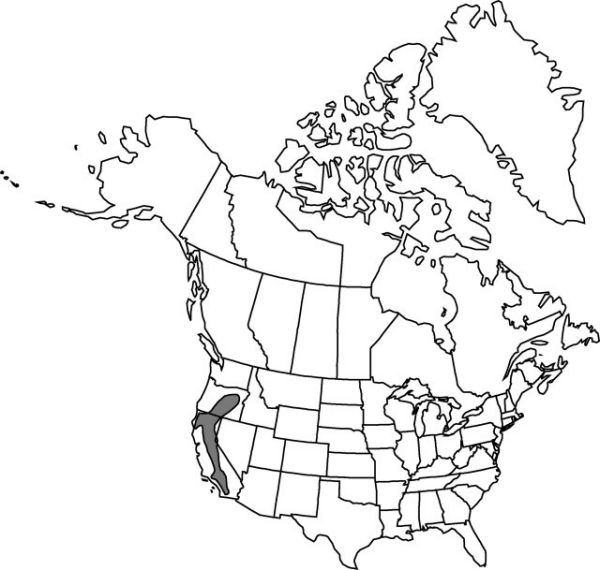Allium campanulatum
Proc. Amer. Acad. Arts 14: 231. 1879.
Bulbs 1–3, producing cluster of stalked basal bulbels distal to roots or filiform rhizomes to 10 cm and terminated by bulbels, ovoid, 1–2 × 0.6–1.4 cm; outer coats enclosing 1 or more bulbs, brown to gray, membranous, cellular-reticulate, cells ± quadrate, walls very sinuous, without fibers; inner coats pink to white, cells obscure, vertically elongate. Leaves persistent, withering from tip by anthesis, 2, basally sheathing, sheaths not extending much above soil surface; blade solid, flat, distinctly concave-convex, 8–40 cm × 1–5 mm, margins entire. Scape persistent, solitary or clustered, 1–3, erect, solid, terete, 10–30 cm × 1–5 mm. Umbel persistent, erect, loose, 10–50-flowered, ± globose, bulbils unknown; spathe bracts persistent, 2–3, 3–5-veined, ovate to lanceolate, ± equal, apex acuminate. Flowers stellate, 5–8 mm; tepals spreading, rose to purple (rarely white) with darker purple crescent adaxially basally, lanceolate to ovate, ± equal, carinate in fruit, becoming erect, ± shiny, rigid, margins entire, apex acuminate, strongly involute at tip; stamens included; anthers purple; pollen yellow; ovary crested; processes 6, prominent, low, central, triangular, margins minutely denticulate; style linear, ± equaling stamens; stigma capitate, scarcely thickened, unlobed; pedicel 10–20 mm, becoming flexuous and mostly strongly deflexed in fruit. Seed coat shining; cells each with minute, central papilla. 2n = 14, 28.
Phenology: Flowering late May–Aug.
Habitat: Generally sandy soils on open or shaded slopes
Elevation: 600–2600 m
Distribution

Calif., Nev., Oreg.
Discussion
Selected References
None.